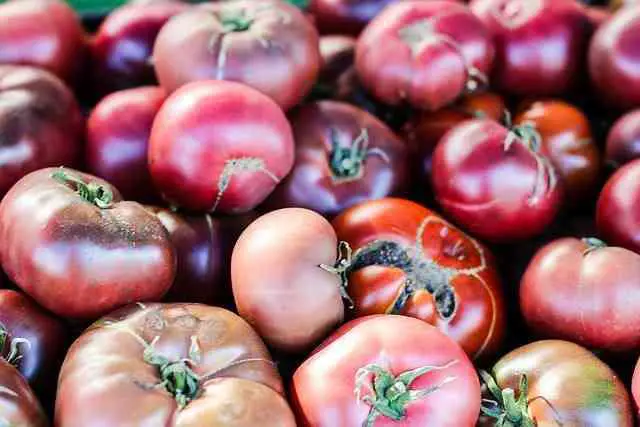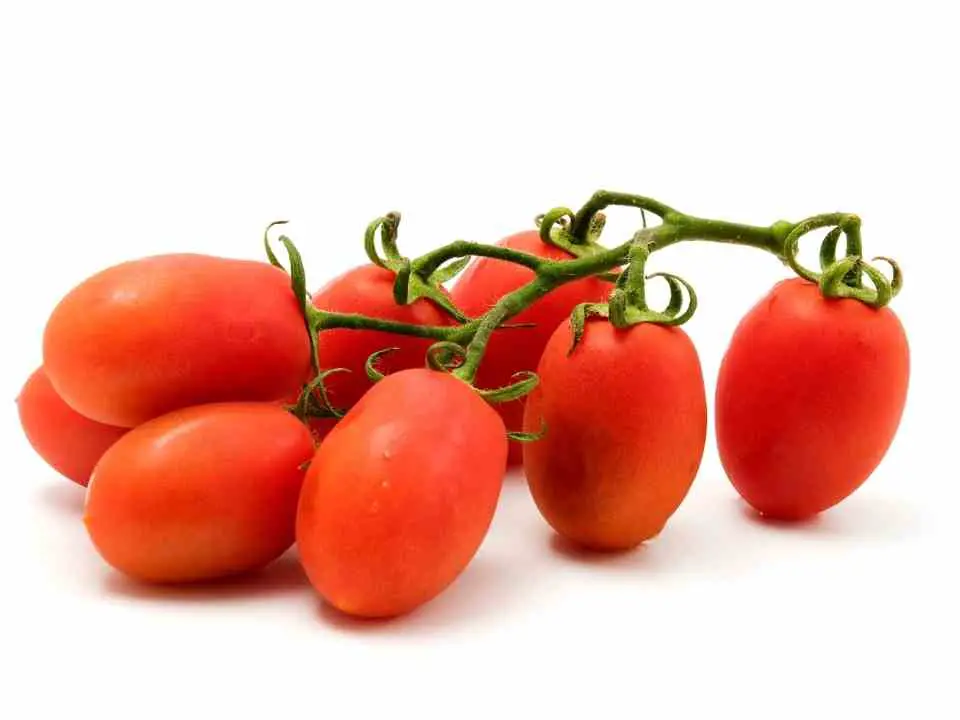Fusarium wilt is a soil-borne fungal disease that’s most common in tomato plants but may also attack:
- Eggplant
- Potatoes
- Pepper
- Peas
- Squash
It can quickly spread through your garden from contaminated soil, attacking any plant that’s growing on the soil.
Reader Poll: What online courses would interest you?
The fungus attacks the plant’s feeder roots, so the leaves and fruits are stripped of the nutrients and moisture they absorb from the soil. As a result, growth will be stunted, and productivity will fall drastically.
Fusarium Wilt can devastate your home vegetable garden, cause havoc and waste all your hard work.
One way to prevent fusarium wilt from attacking your tomato crop is to plant resistant varieties. Let’s take a look at the heirloom tomatoes resistant to fusarium wilt.
List Of Fusarium Wilt Resistant Heirloom Tomatoes
Subscribe to our newsletter!
1. Caiman F1
Caiman F1 is among the most disease-resistant heirloom varieties and showcases high resistance to not only fusarium wilt but also verticillium wilt, tobacco mosaic virus and leaf mold. Additionally, it offers intermediate resistance to tomato spotted wilt virus (TSWV) and root knot nematodes.
The variety produces large, attractive fruits in just about 80 days. The tomatoes are on average 4 inches wide, with deep red skin and a full, meaty flesh that works well with steaks, burgers, and salads.
2. Cherokee Purple

Cherokee Purple is a large purple heirloom tomato originating from India and takes about 85 days to grow to maturity from transplants. The variety is generally resistant to fusarium wilt and septoria, some of the most common tomato diseases.
With the large size of the fruits and their rich, full flavor, it resembles Brandywine. The skin has a beautiful deep purple-pink color with meaty brick-red flesh within. It grows vigorously, producing large vines that give large beefsteak tomatoes, 5″ wide and 3.5″ deep.
3. Cauralina F1
Cauralina F1 is an early-maturing heirloom variety that won’t just deliver exceptional quality but is also resistant to some of the common tomato diseases. Other than fusarium wilt, Cauralina F1 is also resistant to fusarium crown rot, fusarium root rot, and tobacco mosaic virus.
The meaty flesh of the fruit and rich flavor makes it perfect for sauces, salsa, and canning. It will taste just as great when added fresh to salads, burgers, and sandwiches. The plant matures in just about 72 days, producing 8 to 14-ounce attractive heart-shaped fruits.
4. Homestead
Homestead tomato is an heirloom variety developed and released by the University of Florida in the 1950s. It produces large, meaty fruits weighing 8 ounces each on average. It’s a high-yielding determinate variety that can produce up to 50 pounds of fruit per plant. It takes about 80 days to reach maturity and produces concentrated clusters of fruits for a higher yield in limited space. The meaty fruits are excellent for canning and preserving.
The variety was bred to withstand high summer temperatures and continue to set fruit despite the heat. Other than heat-tolerance, homestead tomatoes are also resistant to fusarium wilt and alternaria stem canker.
5. Marglobe
Marglobe is almost a century-old heirloom variety, created by Frederick Pritchard, who crossed ‘Globe’ and ‘Marvel’ tomatoes to develop this fantastic variety. It’s a vigorous grower and produces 7 to 10 ounce deep red juicy fruits. The fruits are resistant to cracking and most of the common diseases.
Marglobe produces a hefty crop and is resistant to fusarium wilt and nail head rust. When young, the tomatoes are somewhat oval, taking a perfect globe shape once completely mature. The fruits take about 100 days to reach maturity from the time you transplant the seedlings into the garden.
6. Roma

Roma tomatoes are an heirloom paste and canning tomatoes originating from Italy. They’re not only popular among gardeners for the delicious, meaty flesh with only a few seeds but also for the disease resistance they offer. It’s a determinate tomato variety that grows in the form of a compact bush, producing an impressive yield if tended well.
Roma tomatoes are resistant to fusarium wilt, verticillium wilt, late blight, and alternaria stem canker. It takes about 80 days to reach maturity, producing 6 oz, oval-shaped tomatoes. They are a bright red color and are great for both cooking and eating raw.
7. Mt. Gold
Mountain Gold is an early maturing, open-pollinated heirloom variety that gives fruit in just about 70 days from setting out the transplants. The smooth-skinned golden-yellow tomatoes are between 8 to 12 ounces and have a beautiful flattened globe shape.
The plants are compact and produce a concentrated yield of firm tomatoes, perfect for slicing, sandwiches, and salads. It’s a determinate variety and offers higher disease resistance to fusarium wilt as compared to many other heirloom tomatoes. Moreover, the fruit is crack-resistant, so you may enjoy an excellent yield even in limited space.
8. Williamette
Williamatte is a determinate heirloom tomato that gives fruit within 70 days of transplanting the seedlings into the garden. The variety gives medium-sized 3 to 7 ounce globe-shaped fruits in a bright red color that works perfectly in raw applications as well as cooking.
Williamette gives a hefty yield when tended well and is resistant to some common tomato diseases, including fusarium and verticillium wilt. Furthermore, the fruits are resistant to radial cracking, so you may enjoy your harvest to the fullest.
Conclusion
So these were some of the favorite heirloom tomatoes resistant to fusarium wilt. With these, you can enjoy the authentic, rich flavors of heirloom tomatoes without fearing any damage to the crop from diseases like fusarium wilt. From the list, choose a variety that suits your region and time the planting correctly to enjoy the best harvest.

